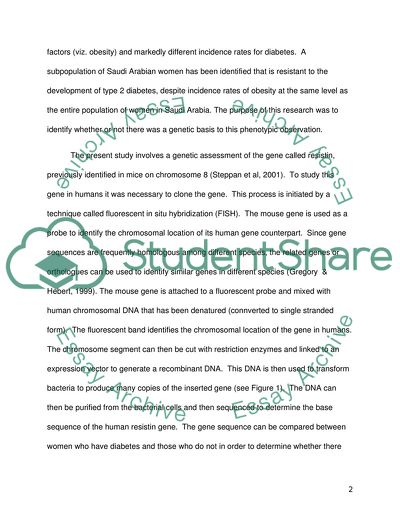Cite this document
(“Describe in detail how you would go about isolating and studying the Essay”, n.d.)
Describe in detail how you would go about isolating and studying the Essay. Retrieved from https://studentshare.org/miscellaneous/1572115-describe-in-detail-how-you-would-go-about-isolating-and-studying-the-expression-of-the-gene-which-appears-to-render-the-southern-region-population-subgroup-in-saudi-arabia-resistant-to-type-2-diabetes
Describe in detail how you would go about isolating and studying the Essay. Retrieved from https://studentshare.org/miscellaneous/1572115-describe-in-detail-how-you-would-go-about-isolating-and-studying-the-expression-of-the-gene-which-appears-to-render-the-southern-region-population-subgroup-in-saudi-arabia-resistant-to-type-2-diabetes
(Describe in Detail How You Would Go about Isolating and Studying the Essay)
Describe in Detail How You Would Go about Isolating and Studying the Essay. https://studentshare.org/miscellaneous/1572115-describe-in-detail-how-you-would-go-about-isolating-and-studying-the-expression-of-the-gene-which-appears-to-render-the-southern-region-population-subgroup-in-saudi-arabia-resistant-to-type-2-diabetes.
Describe in Detail How You Would Go about Isolating and Studying the Essay. https://studentshare.org/miscellaneous/1572115-describe-in-detail-how-you-would-go-about-isolating-and-studying-the-expression-of-the-gene-which-appears-to-render-the-southern-region-population-subgroup-in-saudi-arabia-resistant-to-type-2-diabetes.
“Describe in Detail How You Would Go about Isolating and Studying the Essay”, n.d. https://studentshare.org/miscellaneous/1572115-describe-in-detail-how-you-would-go-about-isolating-and-studying-the-expression-of-the-gene-which-appears-to-render-the-southern-region-population-subgroup-in-saudi-arabia-resistant-to-type-2-diabetes.


